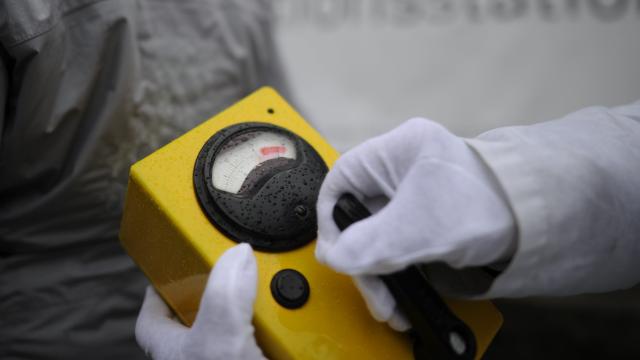Russian nuclear agency Rosatom admitted on Saturday that a suspicious cloud of radiation that spread over the Arkhangelsk region was caused by an explosion at one of its facilities, the Guardian reported, involving experiments involving an “isotope power source for a liquid-fuelled rocket engine.”
Rosatom said that the accident, which temporarily sent radiation spiking up to 20 times background radiation levels in the city of Severodvinsk, resulted in five deaths and three injuries in the form of burns. According to the Guardian, the Rosatom statement may indicate that several employees previously named as injured in a ministry of defence statement (which put the toll at two dead, six injured) have died, and the agency did not elaborate on where the workers are being treated.
According to the New York Times, an additional two military personnel are believed dead.
“A bright memory of our comrades will forever live in our hearts,” Rosatom wrote in the statement.
Rosatom also did not shed much light on the nature of the liquid propulsion unit involved, though possibilities include a “mishap during a test of a new class of nuclear-engined weapons that Mr. Putin first spoke publicly about last year,” the Times wrote. (This weapon has been varyingly referred to as the Burevestnik or the Petrel, though it is publicly unclear whether Russia has a functioning version of the weapon or if it remains in the design and testing stages.)
However, the paper also wrote that Russian state-owned news agency TASS issued a report indicating the accident occurred at a platform over the sea, with the explosion throwing personnel into the water. Additional footage obtained by news site Baza purported to show ambulances in Moscow with their doors sealed with plastic and driven by drivers in protective suits, possibly to prevent the spread of radioactive particles.
В Москву доставили пострадавших при взрыве во время испытаний в Северодвинске. Обратите внимание, что водители реанимобилей одеты в костюмы химзащиты, а машины – обмотаны плёнкой. pic.twitter.com/zn9Occ6rjX
— baza (@bazabazon) August 9, 2019
Russian maritime authorities also ordered shipping halted in the Dvina Bay region of the White Sea, which is close to the military facility identified as the source of the radiation to shipping, and a specialised vessel used to collect waste from nuclear-fuelled icebreakers was subsequently reported to be in the area, the Times wrote. According to Bloomberg, Dvina Bay is also known to be close to Russian nuclear submarine production facilities, and the country’s navy has suffered multiple incidents involving nuclear-powered craft in recent years:
The Russian navy has suffered numerous high-profile accidents over the years. In July, 14 sailors died in a fire aboard a nuclear-powered submarine in the Barents Sea in an incident on which officials initially refused to comment. The country’s worst post-Soviet naval disaster also occurred in the Barents Sea, when 118 crew died on the Kursk nuclear submarine that sank after an explosion in August 2000.
“According to several Russian Defence Ministry sources, all the clothes of those who were wounded have already been burned,” Baza reported, per the Moscow Times. “The same has been done with the hazmat suits and clothes of the doctors who first helped the victims.”
